 W
WAtomic spies or atom spies were people in the United States, the United Kingdom, and Canada who are known to have illicitly given information about nuclear weapons production or design to the Soviet Union during World War II and the early Cold War. Exactly what was given, and whether everyone on the list gave it, are still matters of some scholarly dispute. In some cases, some of the arrested suspects or government witnesses had given strong testimonies or confessions which they recanted later or said were fabricated. Their work constitutes the most publicly well-known and well-documented case of nuclear espionage in the history of nuclear weapons. At the same time, numerous nuclear scientists wanted to share the information with the world scientific community, but this proposal was firmly quashed by the United States government.
 W
WKlaus Emil Julius Fuchs was a German theoretical physicist and atomic spy who supplied information from the American, British, and Canadian Manhattan Project to the Soviet Union during and shortly after World War II. While at the Los Alamos National Laboratory, Fuchs was responsible for many significant theoretical calculations relating to the first nuclear weapons and, later, early models of the hydrogen bomb. After his conviction in 1950, he served nine years in prison in the United Kingdom and then moved to East Germany where he resumed his career as a physicist and scientific leader.
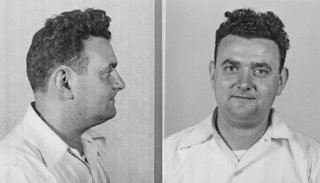 W
WDavid Greenglass was an atomic spy for the Soviet Union who worked on the Manhattan Project. He was briefly stationed at the Clinton Engineer Works uranium enrichment facility at Oak Ridge, Tennessee, and then worked at the Los Alamos Laboratory in New Mexico from August 1944 until February 1946.
 W
WTheodore Alvin Hall was an American physicist and an atomic spy for the Soviet Union, who, during his work on US efforts to develop the first and second atomic bombs during World War II, gave a detailed description of the "Fat Man" plutonium bomb, and of several processes for purifying plutonium, to Soviet intelligence. His brother, Edward N. Hall, was a rocket scientist who worked on intercontinental ballistic missiles for the United States government.
 W
WThe letters of last resort are four identically-worded handwritten letters from the Prime Minister of the United Kingdom to the commanding officers of the four British ballistic missile submarines. They contain orders on what action to take in the event that an enemy nuclear strike has destroyed the British government, and has killed or otherwise incapacitated both the prime minister and their designated "second person", typically a high-ranking member of the Cabinet, such as the Deputy Prime Minister or the First Secretary of State, to whom the prime minister has designated the responsibility of choosing how to act, in the event that they die in office. In the event that the orders are carried out, the action taken could be the last official act of the Government of the United Kingdom.
 W
WHoward Morland is an American journalist and activist against nuclear weapons who, in 1979, became famous for apparently discovering the "secret" of the hydrogen bomb and publishing it after a lengthy censorship attempt by the Department of Energy. Because of some similarities in experience, he became outspoken in the protest against the detention of Mordechai Vanunu.
 W
WStewart David Nozette is an American planetary scientist, technologist, and consultant who worked for the United States Department of Energy, the United States Department of Defense, DARPA, the United States Naval Research Laboratory, and NASA. He is also a convicted felon for attempted espionage and fraud against the United States. The FBI arrested him October 19, 2009, charging him with attempted espionage after a sting operation which Nozette's lawyer claims amounted to entrapment. At trial, Nozette admitted attempting to sell U.S. classified information to someone he believed was an Israeli Mossad operative, but was in reality an undercover Federal Bureau of Investigation employee. He pleaded guilty to one charge of attempted espionage and was sentenced, under the terms of a plea bargain, to thirteen years in prison. After serving time at the Federal Correctional Institution, Terre Haute, Nozette was scheduled for release from the U.S. federal prison system in November 2020 and was released on November 13th 2020. The FBI found no evidence that any classified materials were actually released to anyone outside the US Government.
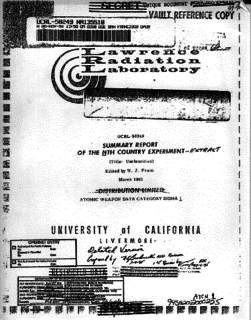 W
WThe Nth Country Experiment was an experiment conducted by Lawrence Livermore National Laboratory starting in May 1964 which sought to assess the risk of nuclear proliferation. The experiment consisted in paying three recent young physicists who had just received their PhDs, though had no prior weapons experience, to develop a working nuclear weapon design using only unclassified information, and with basic computational and technical support. "The goal of the participants should be to design an explosive with a militarily significant yield", the report on the experiment read, "A working context for the experiment might be that the participants have been asked to design a nuclear explosive which, if built in small numbers, would give a small nation a significant effect on their foreign relations."
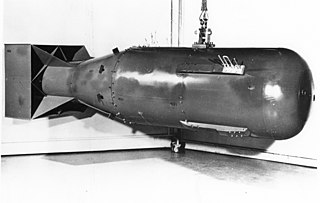 W
WNuclear espionage is the purposeful giving of state secrets regarding nuclear weapons to other states without authorization (espionage). There have been many cases of known nuclear espionage throughout the history of nuclear weapons and many cases of suspected or alleged espionage. Because nuclear weapons are generally considered one of the most important of state secrets, all nations with nuclear weapons have strict restrictions against the giving of information relating to nuclear weapon design, stockpiles, delivery systems, and deployment. States are also limited in their ability to make public the information regarding nuclear weapons by non-proliferation agreements.
 W
WPerseus (Персей) was the code name of a hypothetical Soviet atomic spy that, if real, would have allegedly breached United States national security by infiltrating Los Alamos National Laboratory during the development of the Manhattan Project, and consequently, would have been instrumental for the Soviets in the development of nuclear weapons.
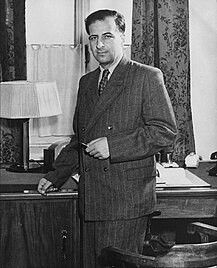 W
WBruno Pontecorvo was an Italian and Soviet nuclear physicist, an early assistant of Enrico Fermi and the author of numerous studies in high energy physics, especially on neutrinos. A convinced communist, he defected to the Soviet Union in 1950, where he continued his research on the decay of the muon and on neutrinos. The prestigious Pontecorvo Prize was instituted in his memory in 1995.
 W
WQ clearance or Q access authorization is the United States Department of Energy (DOE) security clearance required to access Top Secret Restricted Data, Formerly Restricted Data, and National Security Information, as well as Secret Restricted Data. Restricted Data (RD) is defined in the Atomic Energy Act of 1954 and covers nuclear weapons and related materials. The lower-level L clearance is sufficient for access to Secret Formerly Restricted Data (FRD) and National Security Information, as well as Confidential Restricted Data, Formerly Restricted Data, and National Security Information. Access to Restricted Data is only granted on a need-to-know basis to personnel with appropriate clearances.
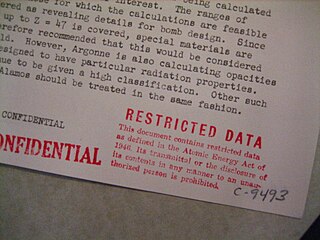 W
WRestricted Data (RD) is a category of proscribed information, per National Industrial Security Program Operating Manual (NISPOM). Specifically, it is defined by the Atomic Energy Act of 1954 as:all data concerning (1) design, manufacture, or utilization of atomic weapons; (2) the production of special nuclear material; or (3) the use of special nuclear material in the production of energy, but shall not include data declassified or removed from the Restricted Data category pursuant to section 142 [of the Act].
 W
WJulius Rosenberg and Ethel Rosenberg were American citizens who were convicted of spying on behalf of the Soviet Union. The couple were convicted of providing top-secret information about radar, sonar, jet propulsion engines and valuable nuclear weapon designs. Convicted of espionage in 1951, they were executed by the federal government of the United States in 1953 in the Sing Sing correctional facility in Ossining, New York, becoming the first American civilians to be executed for such charges and the first to suffer that penalty during peacetime.
 W
WThe Smyth Report is the common name of an administrative history written by American physicist Henry DeWolf Smyth about the Manhattan Project, the Allied effort to develop atomic bombs during World War II. The subtitle of the report is A General Account of the Development of Methods of Using Atomic Energy for Military Purposes. It was released to the public on August 12, 1945, just days after the atomic bombings of Hiroshima and Nagasaki on August 6 and 9.
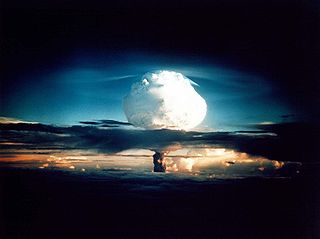 W
WThis article chronicles the history and origins of the Teller–Ulam design, the technical concept behind modern thermonuclear weapons, also known as hydrogen bombs. The design, the details of which are military secrets known to only a handful of major nations, is believed to be used in virtually all modern nuclear weapons that make up the arsenals of the major nuclear powers.
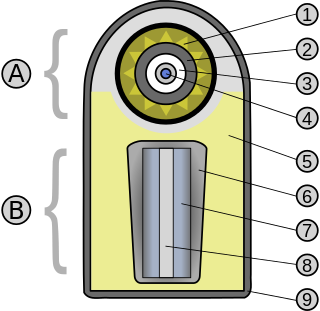 W
WA thermonuclear weapon, fusion weapon or hydrogen bomb is a second-generation nuclear weapon design. Its greater sophistication affords it vastly greater destructive power than first-generation atomic bombs, a more compact size, a lower mass or a combination of these benefits. Characteristics of nuclear fusion reactions make possible the use of non-fissile depleted uranium as the weapon's main fuel, thus allowing more efficient use of scarce fissile material such as uranium-235 or plutonium-239.
 W
WUnited States of America v. Progressive, Inc., Erwin Knoll, Samuel Day, Jr., and Howard Morland, 467 F. Supp. 990, was a lawsuit brought against The Progressive magazine by the United States Department of Energy (DOE) in 1979. A temporary injunction was granted against The Progressive to prevent the publication of an article written by activist Howard Morland that purported to reveal the "secret" of the hydrogen bomb. Though the information had been compiled from publicly available sources, the DOE claimed that it fell under the "born secret" clause of the Atomic Energy Act of 1954.